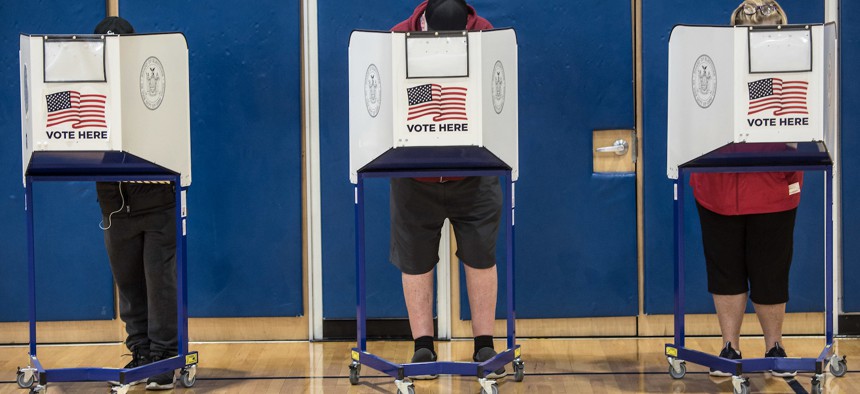In 2019, the state Legislature approved a package of measures updating New York’s voting laws. Among other things, New York established early voting and made it easier to switch party affiliation before a primary. And in 2020, the state Legislature approved automatic voter registration, with the bill still awaiting Gov. Andrew Cuomo’s signature. But some lawmakers and voting rights advocates still have reforms they say would make voting easier and boost New York’s typically low voter turnout. These are the most prominent, with the best chance of passing in the foreseeable future:
Election Day voter registration: This would require a state constitutional amendment, as the state constitution currently requires that voters register no later than 10 days before an election. The state Legislature has already started the multiyear process to amend the Constitution, passing a resolution in 2019. If it passes again next year, the proposal can go to voters in November 2021 as a ballot referendum. If voters approve, lawmakers will have the constitutional authority to pass a new state law establishing same day voter registration.
Currently, New York has among the earliest registration deadlines in the country at 25 days before Election Day. Before an amendment passes, the Legislature could still change the deadline to the constitutionally permissible minimum of 10 days prior to an election. Legislation to do this, sponsored by state Sen. Brian Kavanagh, passed in both 2019 and 2020, but died in the Assembly both years.
No-excuse absentee ballots: Right now, voters must provide a valid reason for requesting an absentee ballot, like being out of the county on Election Day or suffering a temporary illness. This year, the state temporarily expanded the definition of illness to include the fear of contracting or spreading COVID-19. Like Election Day voter registration, changing that requires a constitutional amendment. The state Legislature took the first step by passing a resolution in 2019, which means if it passes again next year, it could appear on the ballot in 2021.
Amending early voting: 2020 offered the first major test of early voting in New York, and voters across the state were met with long lines. Voting rights advocates said there were too few voting locations, and they weren’t open long enough to meet demand. State Senate Deputy Majority Leader Michael Gianaris proposed legislation that would double the number of early voting sites required under state law from one per 50,000 voters to one per 25,000 voters. It would also remove the part of the law that allows counties larger than 350,000 to have only seven polling places, ensuring that the ratio of voters to polling place applies even to large counties.
Curbside voting: States including North Carolina, Texas and Virginia have mechanisms to allow the elderly or disabled who are unable to stand in line to vote from their cars or without entering a polling place, but New York does not. The option rose in prominence during the pandemic, as a safe way for those most at risk from COVID-19 to still vote in person.
Absentee ballot drop boxes: State lawmakers did not pass legislation in time for the 2020 election to establish secure absentee ballot drop boxes, but they could still pass a measure sponsored by state Sen. Brad Hoylman and Assembly Member Richard Gottfried that would create them for future elections. This year, Cuomo permitted election officials to set up drop boxes at early polling places, board of elections offices and Election Day voting sites. Drop boxes are fairly common in other states that more widely use mail-in voting to give voters alternate ways to return their ballots in an attempt to make it as convenient as possible.
NEXT STORY: How to reform the Board of Elections


